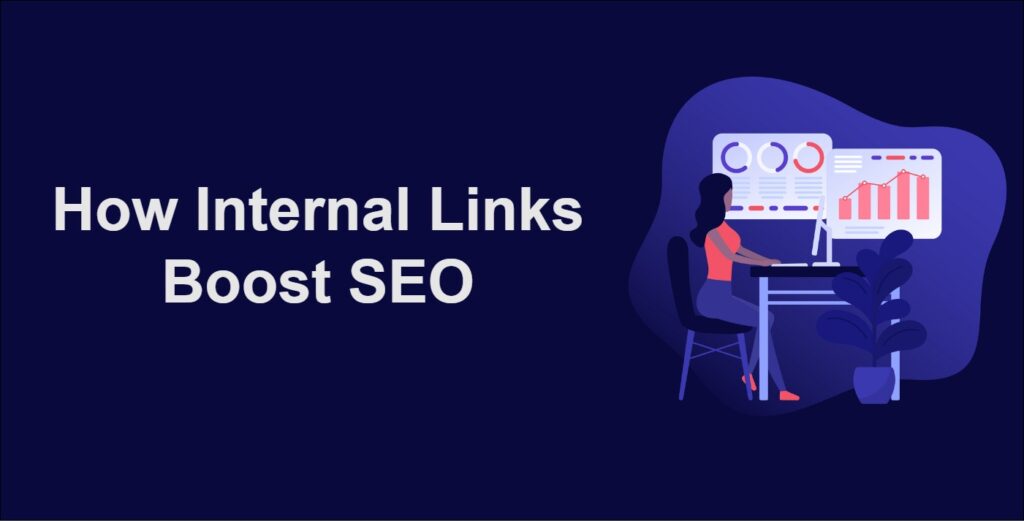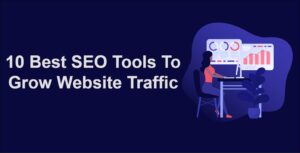Internal links are a powerful yet often underestimated tool. They play a pivotal role in enhancing the structure, usability, and overall SEO performance of your website. Internal links are not just navigation aids; they contribute significantly to search engine rankings and user experience.
In this comprehensive guide, we’ll delve into the importance of internal links for SEO and provide insights on how to utilize them effectively to maximize your website’s potential.
Internal links are a fundamental aspect of SEO that can significantly impact your website’s performance. By strategically incorporating them into your content and following best practices, you can create a more organized, user-friendly, and search engine-friendly website. Internal links not only improve navigation but also contribute to better search engine rankings, content discoverability, and user engagement.
As you implement internal linking strategies, keep your audience’s needs in mind and aim to create a seamless browsing experience that keeps visitors engaged and informed.
Why Internal links are the Important SEO Factor
Internal links are hyperlinks that connect one page on a website to another page within the same domain. These links are distinct from external links, which point to pages on other websites. The strategic placement and proper utilization of internal links offer several benefits for your website’s SEO efforts:
1. Enhanced Website Navigation
One of the primary benefits of internal links is improved navigation. By connecting related pages through internal links, you make it easier for users to explore your website. This leads to a better user experience and reduces bounce rates.
2. Distributing Link Equity
Internal links allow you to distribute link equity, also known as “link juice,” across your website. When you link from one page to another, you pass on some of the SEO value and authority to the linked page. This helps in improving the search engine rankings of linked pages.
3. Content Discoverability
Internal links help search engine crawlers discover and index your content more effectively. When crawlers follow internal links, they can access and index deeper pages on your website that might not be easily accessible from the homepage.
4. Keyword Optimization
Strategically using anchor text in internal links allows you to optimize for specific keywords. This signals to search engines what the linked page is about and can positively impact its ranking for those keywords.
5. Decreased Page Depth
Internal links reduce the number of clicks required for users and search engine crawlers to access important content. This decreases the “page depth,” ensuring that crucial pages are not buried deep within the website’s hierarchy.
6. User Engagement and Time on Site
When users find relevant internal links that lead to valuable content, they are more likely to explore and spend more time on your website. This increased engagement can signal to search engines that your content is valuable and relevant.
Internal Links best practices for SEO
Effective internal linking helps with SEO, keeps users engaged, and encourages them to explore more of your content. When done strategically and thoughtfully, internal links can significantly improve your website’s search engine rankings and overall user experience.
Here are some best practices for internal linking in SEO:
1. Create Relevant and Informative Content
Before adding internal links, ensure that your content is valuable, relevant, and informative. Internal links should enhance the user’s experience by directing them to additional resources or related topics.
2. Use Descriptive Anchor Text
Anchor text is the clickable text that appears in a hyperlink. Use descriptive and relevant anchor text that provides context about the linked page’s content. Avoid using generic phrases like “click here” or “read more.”
3. Prioritize User Experience
Internal links should enhance the user experience rather than disrupt it. Place links where they naturally fit within the content and guide users to related information that complements what they’re reading.
4. Utilize a Hierarchical Structure
Organize your website’s content into a hierarchical structure that makes sense for users and search engines. This structure aids in distributing link equity and helps crawlers understand the importance of different pages.
Your site’s structure should be well-organized, with important pages accessible from the homepage and subpages linked from relevant categories or parent pages.
5. Fix Broken Links
Regularly audit your website for broken internal links. Broken links can frustrate users and negatively impact SEO. Use tools like Google Search Console or other link-checking software to identify and fix broken links promptly.
6. Update and Maintain Links
Regularly review your website’s content and internal links to ensure they are up-to-date. Broken or outdated links can frustrate users and negatively impact your SEO efforts.
7. Don’t Overdo It
While internal links are beneficial, excessive linking can be overwhelming for users and may appear manipulative to search engines. Focus on providing high-quality links that enhance the user experience.
Internal linking is important, overloading a page with too many internal links can be counterproductive. Focus on quality over quantity. A few well-placed links are more effective than numerous unrelated ones.
Internal linking in SEO Examples
here’s a table with some good relevant examples of internal linking in SEO:
| Context | Anchor Text | Internal Link |
|---|---|---|
| Blog post: Healthy Eating | “10 Delicious Fruit Recipes” | [Link to Fruit Recipe Blog Post] |
| E-commerce: Product Page | “Explore our range of running shoes” | [Link to Running Shoes Product Page] |
| Clothing Retailer: Category | “View our selection of Women’s Winter Coats” | [Link to Women’s Winter Coats Subcategory] |
| Historical Article: Industrial Revolution | “The Dark Side of the Industrial Revolution” | [Link to Article on Labor Conditions] |
| Content Marketing Guide | “Demystifying SEO: A Step-by-Step Overview” | [Link to Beginner’s SEO Guide] |
| Digital Marketing Agency: Service Page | “Explore our case studies” | [Link to Case Studies Page] |
| Website Navigation Menu | “Blog” | [Link to Blog Main Page] |
| FAQ Page: Benefits of Exercise | “The Surprising Benefits of Regular Exercise” | [Link to Blog Post on Exercise Benefits] |
These examples illustrate how internal linking can be effectively used in various contexts to provide a better user experience, guide visitors to relevant content, and improve SEO by distributing link authority within a website.
Common Internal Linking Mistakes to Avoid
To optimize the effectiveness of your internal links, steer clear of these common mistakes:
1. Over-Optimized Anchor Text
Avoid over-optimizing anchor text with exact-match keywords. Instead, use natural and varied anchor text that enhances the user experience.
2. Neglecting Mobile-Friendly Links
Ensure that internal links are easily clickable on mobile devices. Neglecting mobile users can lead to a poor user experience and hinder your SEO efforts.
3. Ignoring Orphan Pages
Orphan pages are those that aren’t linked to from other pages on your website. Ensure all important pages are linked to and easily accessible.
4. Not Using Nofollow Attributes
While internal links usually pass link equity, there may be instances where you want to prevent the passing of authority. Use the “nofollow” attribute for such cases.





